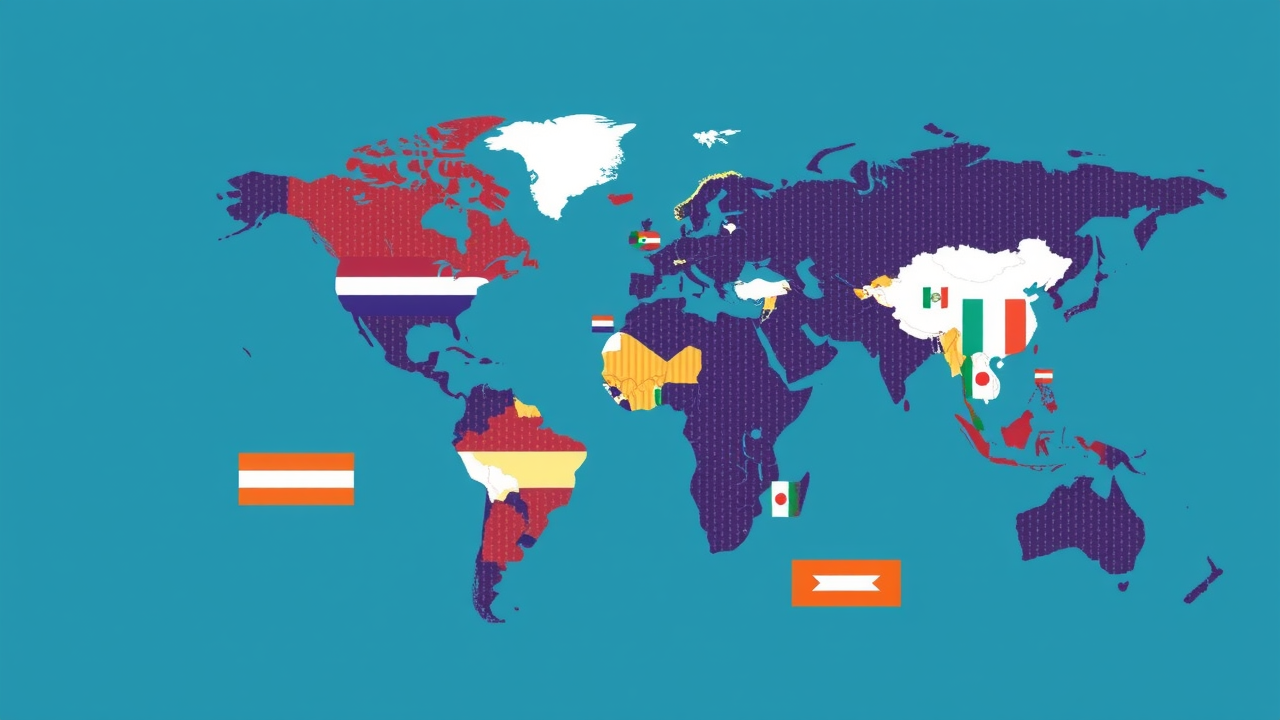Did you know? Since 2018, policy shifts have directly influenced over $300 billion in traded goods, sparking fierce debate over the true cost—and the real winners and losers—of modern tariff policy effects. If you think tariffs only impact governments and exporters, think again. Explore how these policies ripple across your shopping cart, paycheck, and even the ground beneath global trade.
The Startling Economics: Setting the Stage for Tariff Policy Effects
Tariff policy effects go far beyond official speeches and trade headlines. They directly impact the economic backbone of the United States and its trading partners, shaping the cost we all pay for goods—whether imported or made at home. Tariff rate changes are not just technical adjustments; they're levers with consequences for the broader economic impact. This section explores how unconventional data, such as shipping trends and consumer behavior, reveal unexpected outcomes behind each tariff announcement.
"According to the Federal Reserve, trade policy changes since 2018 have influenced over $300 billion in goods—raising questions about the real winners and losers of tariff policy effects."
- Unconventional data drivers behind tariff policy effects: From logistics delays to real-time price hikes at the supermarket, the subtle signals often reveal policy impact before official numbers do.
- How the global trade war shapes the tariff policy debate: Political tensions, tit-for-tat tariffs, and public opinion combine, making every trade war move a new economic experiment with real-world fallout.

What You'll Learn: A Candid Look at Tariff Policy Effects
Navigating the world of tariffs is complex, with government promises, fiscal hopes, and global pushback all entangled. As tariffs rise or fall, entire industries pivot—or falter. Here’s what you’ll uncover in this article:
- Key insights into shifting tariff rates and their impact on the United States and partners
- The central role of President Trump and the Trump administration in elevating tariff policy to a daily headline
- How consumer prices and supply chains were—and still are—transformed by policy moves
- The escalation spiral of retaliatory tariffs and overlooked knock-on economic effects
- Why tariff revenue often misses fiscal targets, and who really shoulders the cost

Tracing Tariff Policy Effects: From President Trump to the Trade War
How President Trump and the Trump Administration Ignited a Modern Trade War
A pivotal chapter in US trade policy began with the Trump administration, whose approach redefined global trade partnerships and pricing structures. The era's tariff announcements shook old alliances, launched a full-scale trade war, and led to sharp increases in tariff rates between 2018 and 2023. The timeline of policy shifts reveals a rapid escalation: initial steel and aluminum tariffs, sweeping bans on specific imported goods, and sudden policy reversals created uncertainty for domestic producers and global suppliers alike. Each move sparked retaliatory tariffs from major trading partners, compounding the economic impact on both sides.
- Timeline of tariff rate escalations (2018–2023): Early moves targeted steel, then quickly cascaded to electronics, autos, and agricultural products, affecting hundreds of billions in trade.
- Retaliatory tariffs and global trade tensions: China, the EU, and other major buyers responded in kind, amplifying the pressure on US industries and stoking volatility in global trade.
"The trade war was never simply about economics; it was a battle for global dominance."

Deconstructing Tariff Rate Policies: United States vs. Global Trade
What Are Tariff Rates? The Mechanism Behind Modern Policy Effects
At their core, tariff rates determine the cost of bringing goods across borders. While tariffs are often justified as revenue sources (tariff revenue), their real-world impact stretches drastically further. The gulf between projected tariff revenues and the economic drag on manufacturers, exporters, and everyday consumers has become increasingly clear thanks to detailed Federal Reserve data. During the height of the trade war, average US tariff rates soared from historic lows to over 6%, placing the United States among the world’s more protectionist economies.
- Tariff revenue goals versus actual economic impact: Tariff revenues often fail to compensate for ripple effects on industry costs, lost markets, or rising consumer prices.
- Federal Reserve data on average tariff rates during the trade war: Shows how each percentage point increase in tariffs was matched by stunted growth in key sectors and elevated consumer price inflation.
| Year | US Avg. Tariff Rate | Global Avg. Tariff Rate |
|---|---|---|
| 2016 | 1.6% | 2.5% |
| 2018 | 3.9% | 2.3% |
| 2020 | 6.1% | 2.2% |
| 2023 | 5.8% | 2.1% |
The Economic Impact of Tariff Policy Effects on Supply Chains
How Tariff Policy Effects Ripple Through Supply Chains
Tariffs impose new cost burdens at every stage of the supply and distribution process. Increased duties on materials drive up input prices, causing manufacturers to adjust sourcing and logistics strategies. From sourcing alternative suppliers to rearranging production abroad, the repercussions cascade across supply chains, impacting everything from component costs to delivery timelines. Even after new trade routes are established, uncertainty remains, as further tariff announcements or retaliatory moves keep costs in flux.
- Material sourcing, logistics, and manufacturing overheads: As tariff costs rise, businesses face higher bills for raw materials, reconfiguration of logistics, and increased manufacturing overheads that ultimately feed into higher consumer prices.
- Responses from multinational corporations: Many global giants shifted assembly to neutral countries or invested in smarter automation to absorb or bypass new tariff barriers, while smaller operators struggled with thinner margins.
"Supply chains are now battlefields in the trade war sparked by evolving tariff policy effects."

Tariff Policy Effects on Consumer Prices and Market Behavior
Why Tariff Policy Effects Tend to Raise Prices
Whenever tariffs rise, the result is almost always a price increase for consumers. Whether you’re shopping for autos, electronics, or groceries, tariff policy effects work their way into the checkout total. For example, the hike in steel and aluminum tariffs pushed up the cost of US-made cars, while electronics and household goods faced similar spikes as supply chains were rerouted or component costs surged. Over the short term, businesses may attempt to absorb some of the shock, but over time, the cost of higher tariff rates is inevitably passed on.
- Examples of rising consumer prices (autos, electronics, food): After major tariff increases, many auto models saw sticker prices jump by several hundred to thousands of dollars. Food aisles saw costs climb as imported ingredients grew more expensive, and electronics brands revised MSRP to keep up with rapid tariff costs.
- Short-term vs. long-term cost to households: Data from the Federal Reserve and industry sources suggests US households paid, on average, $800-$1,200 more annually for the same basket of goods following tariff increases.
Are these inflation pressures permanent? The Federal Reserve notes that while some costs may subside if tariffs are rolled back, the longer high duties persist, the more likely “sticky” inflation will follow—making higher prices a new normal.

Tariff Policy Effects and Retaliatory Tariffs: The Cycle Intensifies
How Retaliatory Tariffs Amplify the Economic Impact
As the United States imposed new tariffs, trading partners fired back with retaliatory tariffs targeting iconic US exports—soybeans, whiskey, motorcycles—sending US exporters scrambling for new markets. These countermeasures fractured long-established supply networks, splintering global supply chains and forcing costly workarounds. Every new retaliatory measure echoed higher up the value chain, compounding the impact of tariffs.
- Impact of tariffs on US exporters: Exporters faced abrupt market losses, sudden contract cancellations, and heavier tariffs on US-branded goods in foreign markets, eating into profits and hurting long-term competitiveness.
- Global supply chain detours and market fragmentation: To avoid tit-for-tat tariffs, firms rerouted products, set up new distribution hubs, or shifted company headquarters—fragmenting old alliances and increasing operational costs.
"Every shovelful of tariffs uncovers hidden costs for importers and exporters alike."

Winners and Losers: Who Really Pays for Tariff Policy Effects?
Tariff Revenues: Government Gains, Public Loss?
When policymakers trumpet growing tariff revenues, it may sound like a fiscal win—but someone always pays the bill. Higher duties collected at the border usually translate to higher consumer prices or slimmer margins for industries caught in the crossfire. The table below compares total tariff revenue growth with corresponding inflation in key US sectors.
| Year | Tariff Revenue Collected (USD billions) | Consumer Price Index (CPI) Change |
|---|---|---|
| 2017 | $34 | +2.1% |
| 2019 | $74 | +2.3% |
| 2022 | $86 | +4.7% |
- Manufacturers and farmers facing new hurdles: Squeezed margins and lost export contracts, compounded by redundant supply networks.
- Quarterly financial outcomes for key US industries: Several sectors—including agriculture and automotive—reported double-digit earnings declines during the height of the trade war.
"Tariff policy effects are a tax on the everyday consumer, despite political rhetoric."

Case Studies: Tariff Policy Effects in Steel, Agriculture, and Technology
Steel: Reshoring vs. Rising Costs
US tariffs on foreign steel and aluminum were pitched as a path to “reshoring” manufacturing, but the reality is mixed. Domestic steel mills saw some production increase, but at a cost—rising input prices often outstripped wage gains, and US manufacturers using steel as a component found themselves at a sharp cost disadvantage compared to global competitors. Downstream industries weathered job loss and profit erosion as a direct result of tariff rate hikes.

Agriculture: Markets Lost, Subsidies Gained
For American farmers, retaliatory tariffs struck hard, wiping out lucrative export contracts almost overnight. The Trump administration responded with direct subsidies to compensate, but many farmers struggled to regain previously reliable markets even after cash infusions. Crop exports to China and the EU slumped, dominoing into equipment sales, seed companies, and rural Main Street economies.
Technology: From Market Shifts to Supply Chain Rewrites
Major electronics and tech manufacturers responded to US tariffs by moving assembly lines to Southeast Asia or Mexico and diversifying components sourcing. While this shielded them from immediate tariff costs, it fostered long-term uncertainty and supply chain complexity. R&D budgets and new product launches often took a hit as companies scrambled to adapt to a constantly changing tariff landscape.
| Sector | Main Impact | Yearly Export Loss (USD bn) | Job Impact (% Change) |
|---|---|---|---|
| Steel | Input costs up, mixed reshoring success | -$5 | -3% |
| Agriculture | Export markets lost, temporary subsidies | -$15 | -7% |
| Technology | Supply chain overhaul, rise in consumer prices | -$4 | +1% |
Global Perspective: Tariff Policy Effects Beyond US Borders
Asia and the EU: Adaptation, Response, and the Future of Global Trade
Asia and the European Union responded to US tariffs with their own repositioning strategies. For China, shifting export focus to emerging markets became a necessity. The EU accelerated trade talks with Canada and Japan, creating new alliances to counter US market volatility. Emerging economies like Vietnam and Mexico capitalized on supply chain detours, attracting manufacturers fleeing higher tariff rates.
- Trade alliances shifting in response to US tariffs: Bilateral and multilateral deals emerged as a workaround to US import duties, building alternative trade corridors for global supply chains.
- Emerging markets adjusting to new tariff rates: Countries previously overshadowed by US-China trade flows emerged as new manufacturing hubs, further decentralizing global trade.

Video Insight: What Do Economists Say About Tariff Policy Effects?
Expert Panel Discussion: Federal Reserve, Academia, Industry
In recent forums, experts from the Federal Reserve, top universities, and industry roundtables have debated the evolving legacy of tariff policy. Most agree that while tariffs can drive short-term changes in trade balances or even employment, the broader outcome is complex—shaped by retaliation, consumer adaptation, and investment uncertainty. As for the future? Predictions range from cautious optimism to warnings of protracted global trade standoffs if rollback isn’t prioritized soon.
- Differing perspectives on long-term economic impact: Some see tariffs as bargaining chips that could pay off; others warn of long-term erosion of US competitiveness and continued higher prices for consumers.
- Predictions on trade war resolution: Many analysts expect that any “reset” could take years, with persistent supply chain adjustments, while others anticipate that negotiations could soon thaw trade tensions.
Lists: 8 Direct Effects of Tariff Policy Effects You Need to Know
- Raises consumer prices
- Disrupts global supply chains
- Generates government revenue
- Invites retaliatory tariffs from trading partners
- Alters investment strategies in manufacturing and retail
- Affects currency valuations and the US dollar’s stability
- Shifts labor market dynamics
- Impacts innovation and R&D spending

People Also Ask: What are the effects of tariffs?
Answers: Tariff Policy Effects and Economic Impact Overview
- Tariffs raise revenue for governments but also increase costs for consumers and businesses, disrupt supply chains, and may trigger retaliatory tariffs. The ultimate effect frequently includes higher consumer prices and changes in trade patterns as businesses and countries adapt.
People Also Ask: Are Trump's tariffs in effect?
Answers: Current Status of President Trump’s Tariff Policy Effects
- Many of the tariffs enacted during President Trump's administration remain in place or have been partially amended, meaning the tariff policy effects—and the associated debates over higher prices and global supply chain shifts—continue to shape trade today.
People Also Ask: What are the 8 effects of tariffs?
Answers: List of Core Tariff Policy Effects
- Raises consumer prices
- Disrupts global supply chains
- Generates government revenue
- Invites retaliatory tariffs
- Alters investment strategies
- Affects currency valuations and US dollar
- Shifts labor market dynamics
- Impacts innovation and R&D spending
People Also Ask: Do tariffs hurt the US dollar?
Answers: Tariff Policy Effects and the US Dollar
- Tariffs can influence the value of the US dollar indirectly by affecting trade balances, investor confidence, and capital flows. When tariff policy effects introduce significant uncertainty, the US dollar may face downward pressure or heightened volatility on global markets.
Video Insight: Tariff Policy Effects on Day-to-Day Business Operations
Real-World Examples and SME Perspectives
Short documentary-style panel covering perspectives of American small manufacturers and importers, exploring operational changes driven by tariff increases, with in-factory interviews and real-life examples from the supply chain trenches.
FAQs: Common Questions on Tariff Policy Effects
-
Which industries suffer most from tariff policy effects?
Steel manufacturing, agriculture, and technology sectors bore the brunt, with downstream impacts felt broadly in automotive, electronics, and food processing. -
Do tariffs protect local jobs?
While short-term job gains may occur in protected industries, wider job losses often result from higher prices and retaliatory measures, reducing overall employment. -
Can tariff revenue offset public losses?
Not entirely. Tariff revenues rarely match the full macroeconomic and consumer cost caused by impact of tariffs and retaliation. -
Are retaliatory tariffs effective or mutually destructive?
Most economists agree the outcome tends to be mutually destructive, triggering cycles of escalation and market loss for both sides.
Key Takeaways on Tariff Policy Effects
- Tariff policy effects create more losers than winners in a globalized economy.
- Short-term gains may lead to long-term economic harm and retaliation.
- Staying informed and agile is essential for businesses and policymakers alike.
Final Analysis: Navigating the Real Costs of Tariff Policy Effects
"In the battle over tariff policy, transparency and adaptation are the best tools against economic uncertainty."
- Businesses must consider strategic supply chain shifts, alternative sourcing, and scenario planning as a hedge against sudden policy reversals.
- Continuous monitoring of tariff policy and rapid adaptation is now a core competency for global competitiveness.
Don't Miss Out: Stay Ahead of Tariff Policy Effects with Global Trade News
Manufacturer don't miss out! Stay informed on global trade shifts—tariffs, reshoring, and supply chain updates could reshape your strategy. Subscribe to Global Trade News for the latest updates. Call 203-271-7991 today.
The article “Tariff Policy Effects: Unveiling Their True Cost Now” provides a comprehensive analysis of how recent tariff policies have influenced the U.S. economy, consumer prices, and global trade dynamics. To further enrich your understanding, consider exploring the following authoritative resources:
-
“How the United States is eating Trump’s tariffs”: This Reuters article examines how U.S. companies and consumers are bearing the brunt of import tariffs, leading to increased costs and inflationary pressures. (reuters.com)
-
“The Economic Implications of Tariff Increases”: Published by the San Francisco Federal Reserve, this analysis delves into the broader economic consequences of tariff hikes, including their impact on GDP and income distribution across different U.S. states. (frbsf.org)
These resources offer valuable insights into the multifaceted effects of tariff policies, providing both empirical data and expert analyses to deepen your comprehension of this complex subject.
 Add Row
Add Row  Add
Add 




Write A Comment